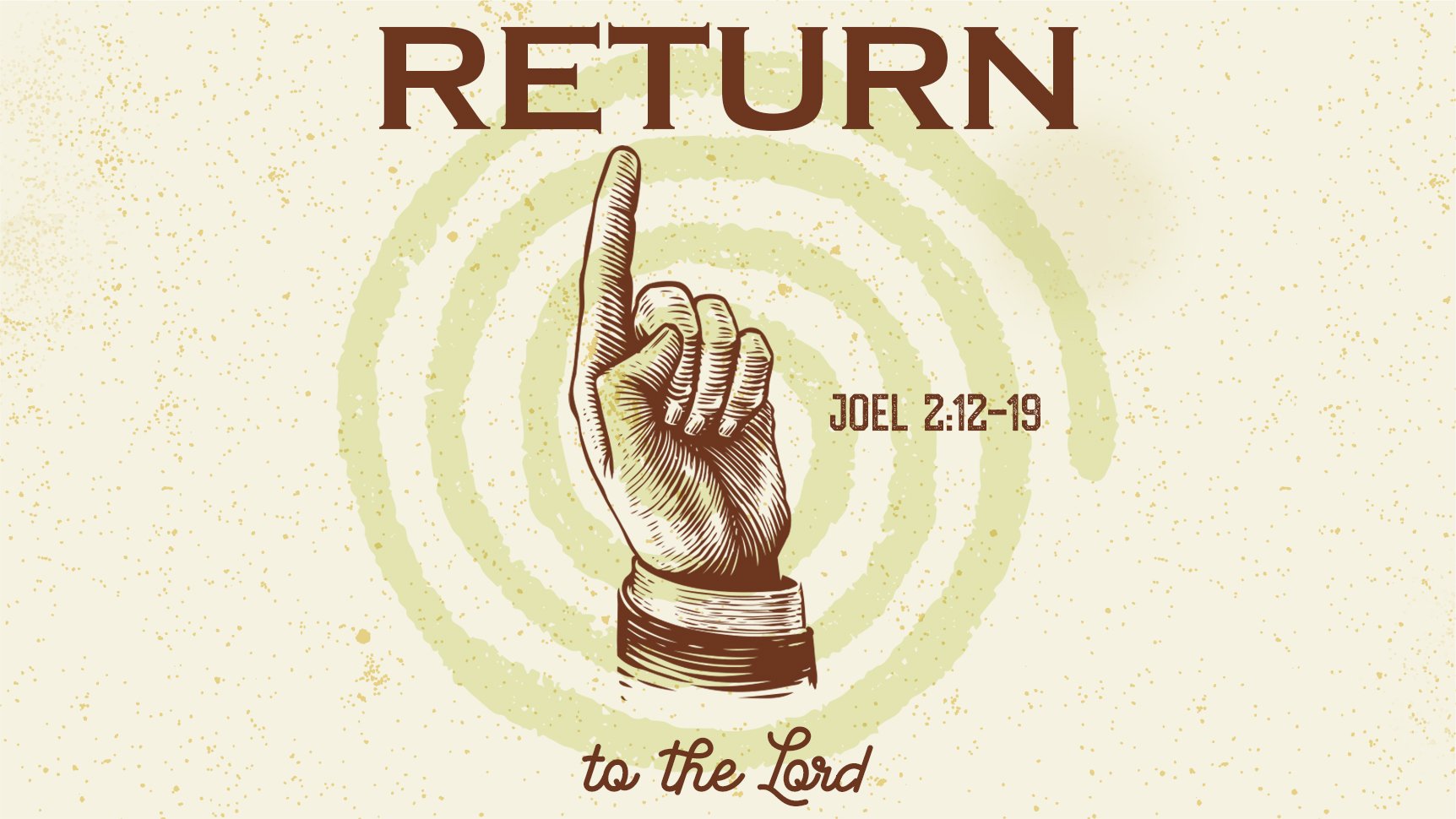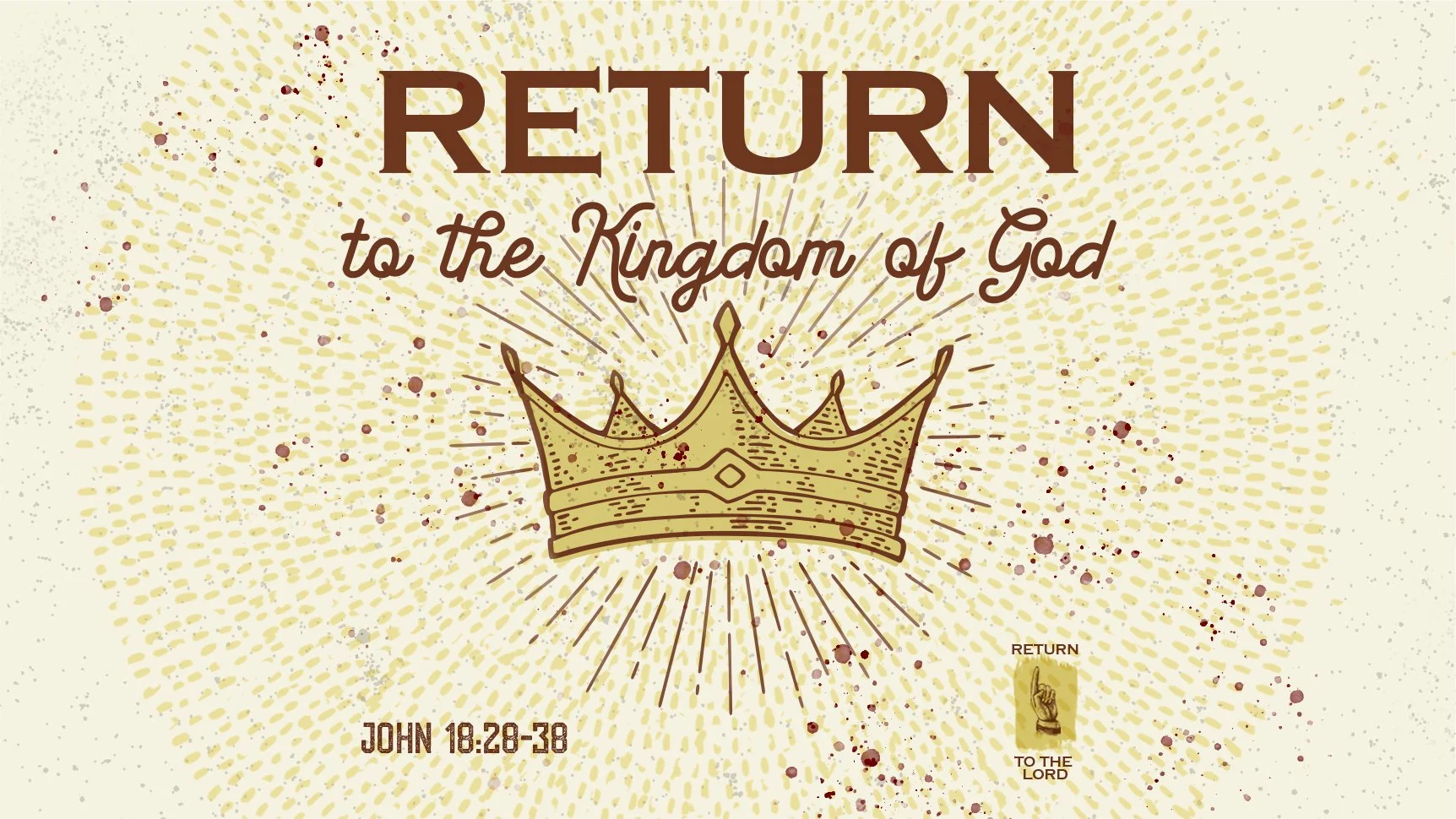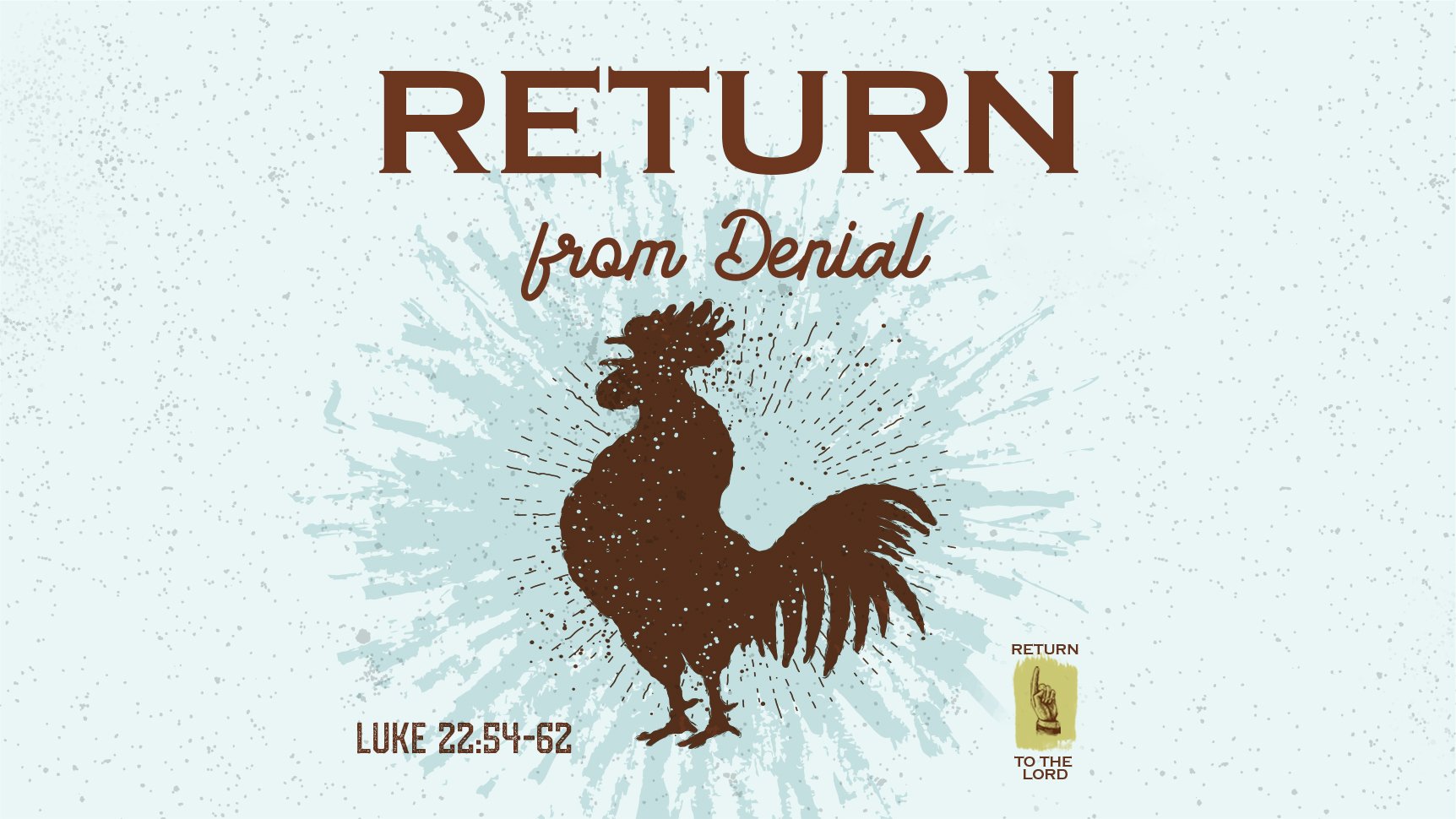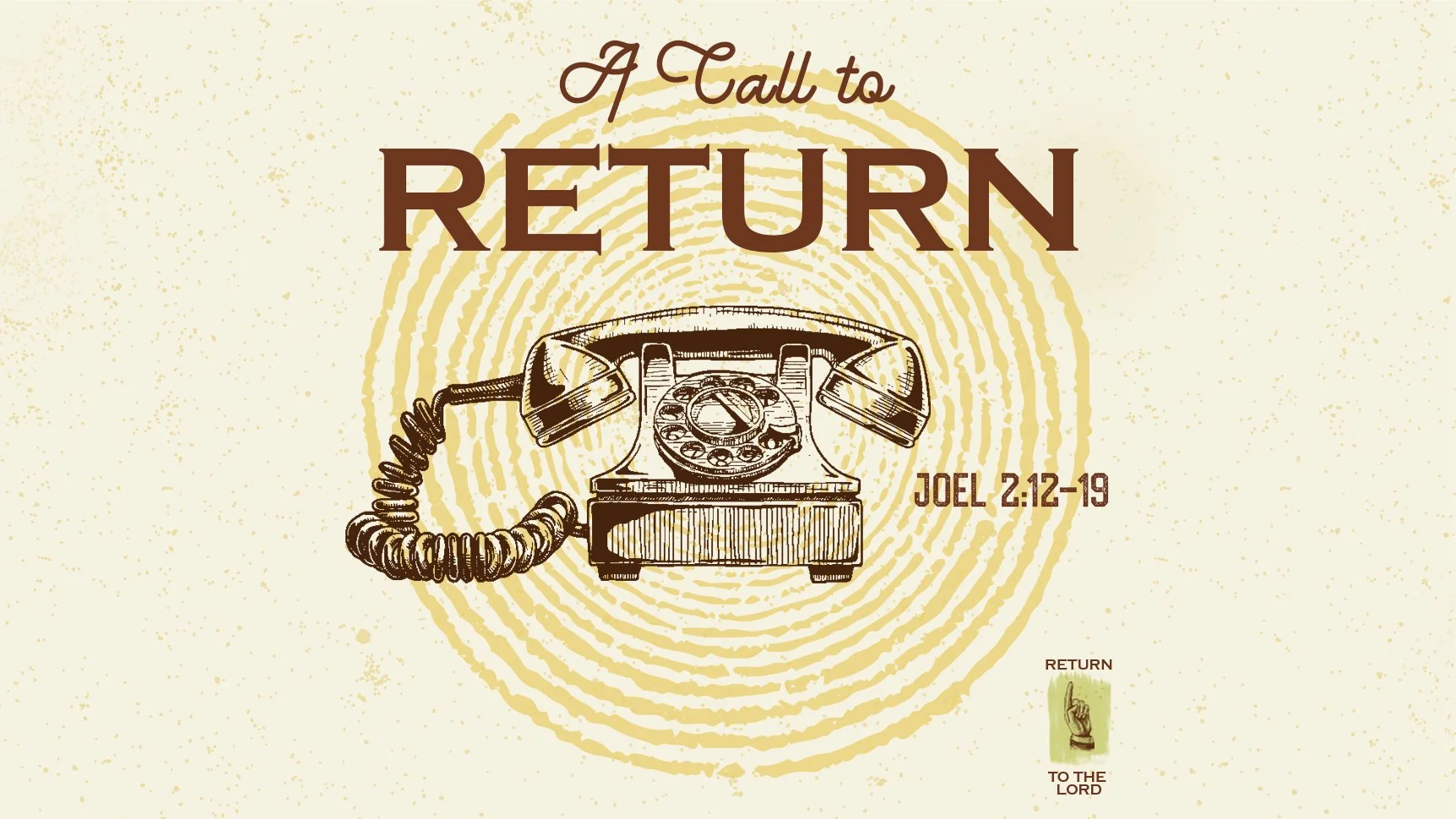Return and See | Twenty-third Sunday after Pentecost | Matthew 28:1-10
“...Return to the Lord your God,
for he is gracious and merciful,
slow to anger, and abounding in steadfast love...”
November 13 | 10:45 a.m.
Twenty-third Sunday After Pentecost
READINGS
Psalm 16
Isaiah 25 : 6-9
1 Corinthians 15 : 1-11
Matthew 28 : 1-10
message presented by Rev. Frank C. Ruffatto
+Points to ponder
- What does the commandment, ‘Remember the Sabbath to keep it holy,’ mean for Christians today?
- What is Christ gifting to us in His invitation to ‘come and see?’
- How can we encourage each other in our congregation to not only ‘come and see’ but to ‘go and tell?’
+Sermon Transcript
Grace, mercy, and peace be unto each of you from God our Father and our Lord and King, Jesus the Christ. Amen.
Let us pray: God, our light and our salvation: illuminate our lives, that we may see Your goodness in the land of the living and looking on Your beauty may be changed into the likeness of Jesus Christ our Lord. Amen.
A very blessed Lord’s Day to each of you! Of course, this is the Lord’s Day because our Lord was resurrected on a Sunday and so, the Church moved her time of gathering to Sunday as the day to observe the Sabbath. What a wonderful picture of the distinction of Law and Gospel. The Sabbath, previously, had been observed out of the imperative of God to “Remember the Sabbath day by keeping it holy.” It was tied to God’s work of bringing the Creation into existence and He, Himself rested afterward. His people were called to keep it special by having it separate from other days. It is set aside and meant for rest and worship.
Enter the Gospel and the honoring of the Sabbath is less an imperative than a true, life-giving blessing – true rest and worship. The Psalmist wrote: “This is the day that the LORD has made; let us rejoice and be glad in it.” This is the day the cornerstone of salvation is laid.
And so, what a wonderful day to come together and to see all that God has done for us in Christ: the forgiveness He offers; the salvation He has won for us; the life that He has secured for us.
Throughout this season of celebration and contemplation, we have been working through a sermon series focused on God’s call for His people to return to Him. We have heard the different sins committed through the course of the Passion; have considered our own sinfulness; have been reminded of God’s call to return to Him; and have been comforted by the word that our God is gracious and merciful, slow to anger, abounding in steadfast love, and most of all that He relents over disaster. Our attention keeps coming back to Jesus and the sacrifice He made to reconcile us to God the Father. Today, it all comes together as we observe that Jesus is risen from the dead and invites His disciples to come and see Him.
Why? Because when they see Jesus risen from the dead, they will begin to understand the significance of everything He has been doing over the last three years in His ministry. They will start “to comprehend with all the saints what is the breadth and length and height and depth, and to know the love of Christ that surpasses knowledge.” And that realization will lead them to share this Good News with others, that they, too, might come to know “the peace of God, which surpasses all understanding.”
But first, let’s back up a bit and listen to Isaiah as he looks into the future to give us a picture of heaven. “On this mountain the LORD of hosts will make for all peoples a feast of rich food, a feast of well-aged wine, of rich food full of marrow, of aged wine well refined.” What a vivid picture he paints. A joyful gathering of people “from all tribes and peoples and languages.”
And in this gathering, the Lord of hosts has “swallow[ed] the covering that is cast over all peoples, the veil that is spread over all nations.” This says nothing less than that the Lord has taken away death and taken away the consequence of sin that would otherwise mean eternal separation from God.
Sounds pretty appealing, doesn’t it? We read Isaiah’s account, we picture its fulfillment, and we long to be there.
But how? This “covering” is cast over all people because “all have sinned and fall short of the glory of God.” All: you, me, every single one of us. This covering is cast over you. And you can’t shake it. You can’t uncover yourself. You are trapped beneath it. Your sinful nature clings to you so stubbornly that you cannot possibly strip yourself of it. And you know it. Your conscience cries out against you, and your thoughts accuse you every waking moment. It seems impossible.
We all know this and lament: “Who then can be saved?” we ask. Jesus tenderly replies: “With man this is impossible, but with God all things are possible.”
God sent His own Son to deal with this problem. He has provided everything we need. “He gave His only Son, that whoever believes in Him should not perish but have eternal life.” God has stepped in and made it possible in Christ.
In Christ, your sin has been forgiven. In Christ, your salvation has been secured. In Christ, you “have an advocate with the Father.” One who is perfectly righteous. An advocate who lived a perfect life and then turned around and offered His own righteousness to you and took your sins in return. He has clothed you with pure vestments in return for your own filthy garments. Through Baptism, Christ has wrapped you up in the robe of His own righteousness, which covers all your sin.
You have a seat at this table! You are invited to the feast! And Isaiah gives voice to our response: “I will greatly rejoice in the LORD; my soul shall exult in my God, for He has clothed me with the garments of salvation; He has covered me with the robe of righteousness.”
That Sunday morning, Jesus emerged from the tomb, resurrected from the dead, fully alive, and His first task was to invite the disciples to Galilee, to come and see. This morning, He extends the same invitation to us: Come and see! Come and look on the One who was pierced and see that the plan of salvation has been completed. Come and see what He has in store for you: your own resurrection! Your very life! Come and see!
But how? Where?
For the disciples, the answer was simple. Come to Galilee. Come to the mountain where you will find Me. And so they did. They came to that mountain and gathered at Jesus’ feet, and He gave them a task. It was simple, but crucial. You’ve come. You’ve seen. You’ve worshiped. Now, go. Go and make disciples. Go and baptize. Go and teach. Go, and know that I am with you always. Come and see; go and tell.
But we don’t have a mountain. Jesus says, “Come to Me,” and we stand like Thomas at the Last Supper, gawking at Jesus, stunned by His words; and we echo: “How can we know the way?”
God gives us the way: His Church. That is to say, we know where to find Christ, because God’s promises and His Word make clear where to find Him: You will always find Christ in “the assembly of all believers among whom the gospel is purely preached and the holy sacraments are administered according to the gospel.” “Where two or three are gathered in [Jesus’] name,” there He is among them.
We come to this place, because it is here that we see Jesus. We gaze on the cross of His crucifixion and ponder the penalty for our sins, which He willingly bore. We can see Him reach down and claim His own in Holy Baptism. We can “taste and see that the Lord is good” as we receive Christ’s very body and blood at His table as we celebrate Holy Communion with Him and with each other. It is here that you can see Him.
And then what? It is no different for us than it was for the disciples: Come and see; go and tell. Isaiah’s words are beautiful here: “Behold, this is our God; we have waited for Him, that He might save us. This is the LORD; we have waited for Him; let us be glad and rejoice in His salvation.” That is the pattern that Jesus lays out for the Christian life: we trust, we wait, He acts, and we rejoice and share the news with others. So simple. So powerful.
“Several Christian exchange students from our [country] were listening to a professor at a college in South America. He said, ‘You’ve probably seen many crosses in our land. Every church spire, many of our public buildings, even the rooms of our homes are decorated with a cross. Now it’s your job as Christians to get the crosses off the church towers and into the hearts of the people.’ What did he mean? Simply that the cross is not merely a Christian symbol but [the] way of [life and salvation]. It is not merely an ornamental device but our hope for eternity.
So today, as you have now come and seen the salvation won for you by your Lord and Savior, may you be moved to go out into the world and to share with others what you have seen. Be glad. Rejoice in Him. And share your great good fortune with the whole world. Amen.
“May the God of hope fill you with all joy and peace in believing, so that by the power of the Holy Spirit you may abound in hope.”
ABOUT THE SERIES
In the Book of Joel, the prophet paints a vivid picture of the coming judgment of God, the Day of the Lord. The imagery is bold and terrifying. Joel’s prophecy has teeth even today as wars rage, natural disasters threaten and destroy, and our culture seems to be unraveling.
But right in the middle of this frightening portent, we find a tender invitation from the Lord: “Return to the Lord your God, for He is gracious and merciful, slow to anger, and abounding in steadfast love; and He relents over disaster” (Joel 2:13). God’s invitation and promise finds its fullness in Jesus Christ, who personifies and accomplishes all that God declares.
During this series, we will consider the theme “Return to the Lord” and examine how the call to return played out in practical ways for the people who walked alongside Christ as He demonstrated and carried out God’s grace and mercy on our behalf, taking God’s wrath upon Himself, setting the stage for God to “turn and relent, and leave a blessing behind Him” (Joel 2:14).
Join us for the Return to the Lord series at Redeemer.











